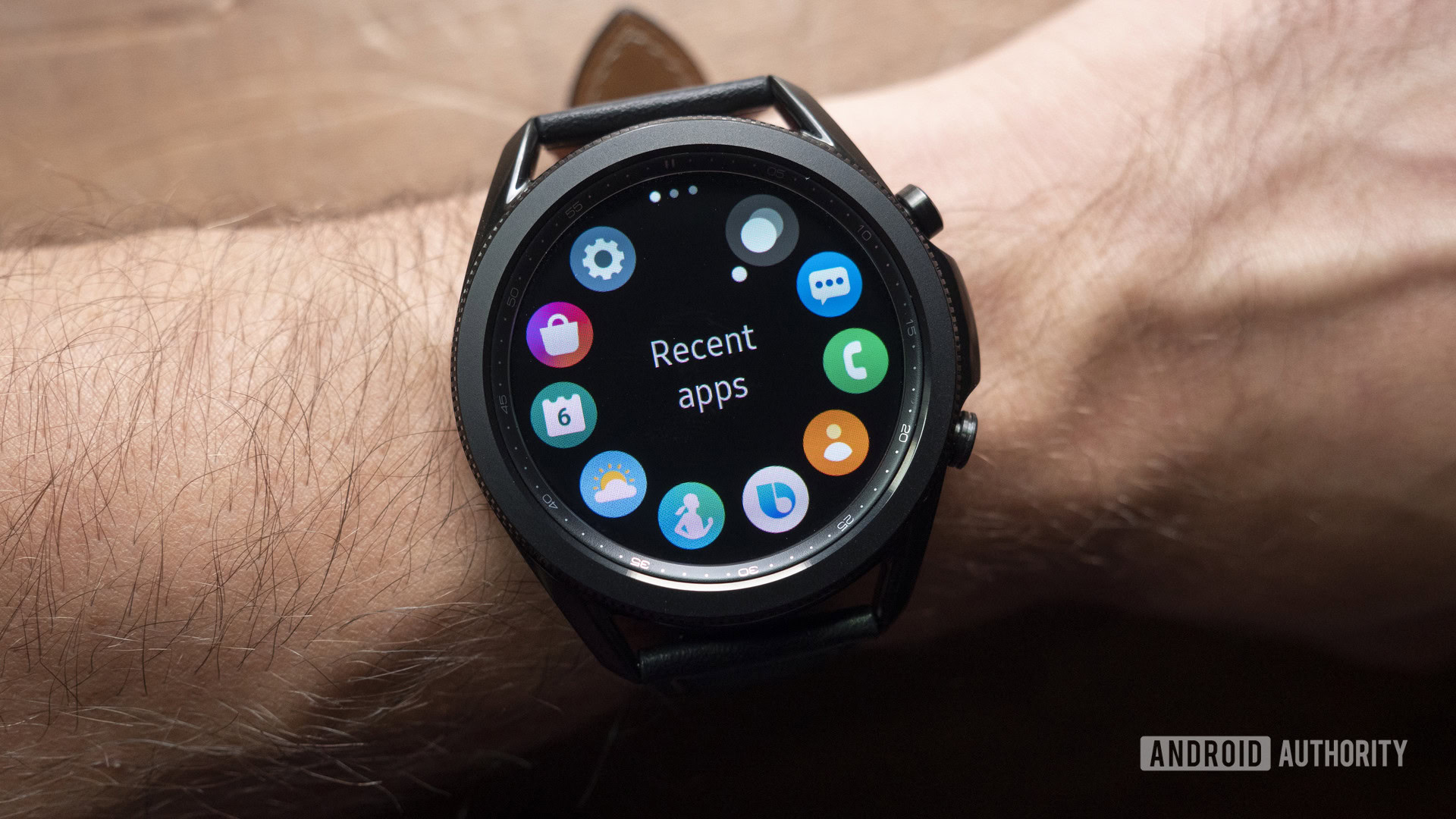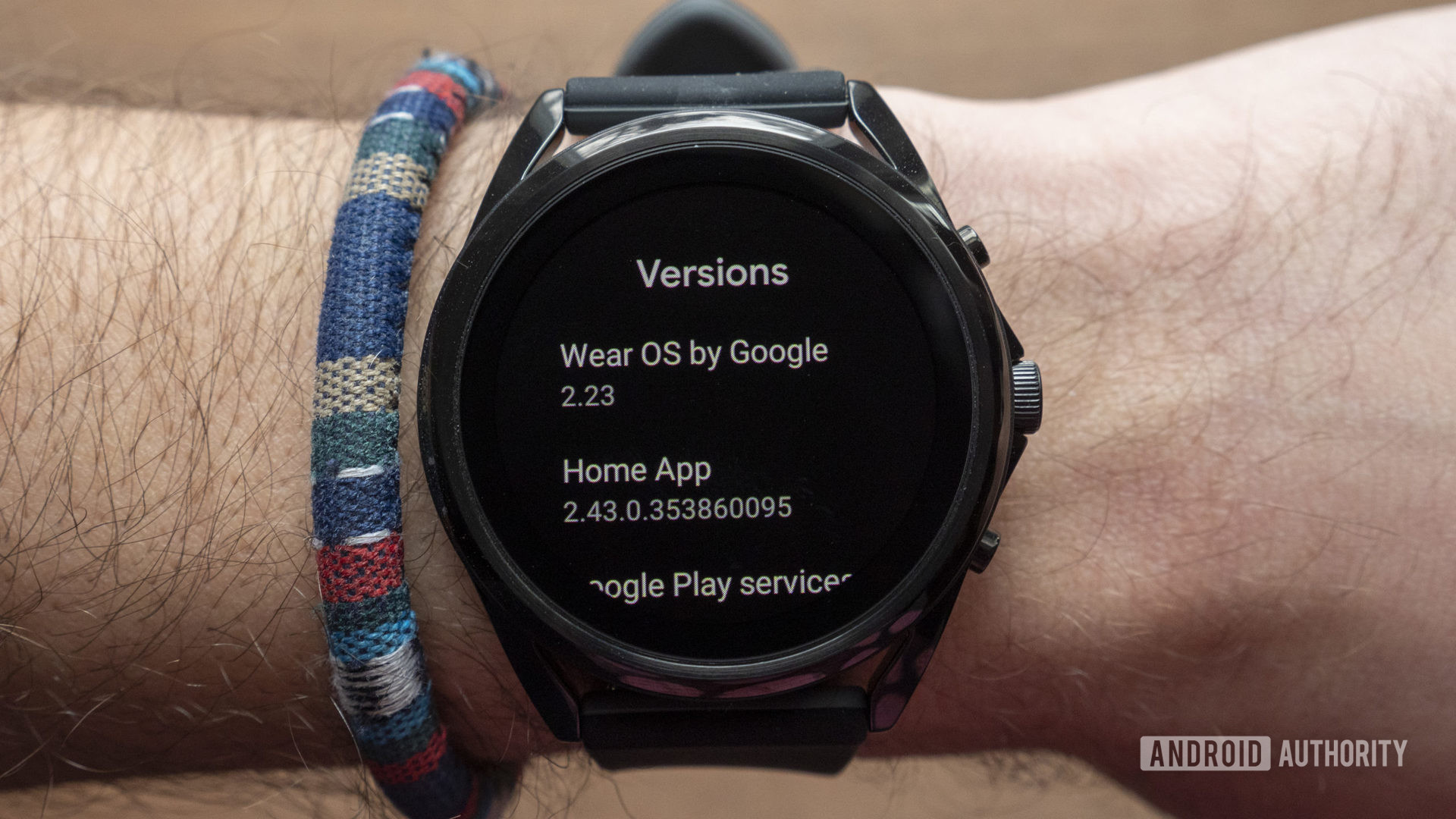Affiliate links on Android Authority may earn us a commission. Learn more.
Why Samsung should ditch Tizen for Wear OS (and why it shouldn't)

When Google launched Android Wear in 2014, it did so with the help of two smartphone OEMs that wanted to help kickstart the smartwatch landscape on Android. The LG G Watch and Samsung Gear Live were the first two Android Wear-powered watches to hit the scene. Shortly after that release, Samsung pivoted away from the platform and went all-in on its year-old operating system, Tizen. Every smartwatch from Samsung since then has run Tizen instead of Google’s Wear OS.
Rumor has it that might change soon. I won’t dive too much into the validity of the rumor, but I do want to talk about the underlying question: why would Samsung ditch its own operating system for Wear OS? Would the company really gain anything from the switch? And does Samsung know it would be joining a sinking ship? Let’s talk about that.
Also read: Samsung Galaxy Watch 3 review: The best Android smartwatch
Reasons for a Wear OS-powered Galaxy Watch

Samsung’s current flagship watch, the Galaxy Watch 3, is one of our favorite smartwatches you can get for your Android phone. But it’s not perfect.
Building an operating system is difficult, and garnering a thriving app ecosystem is one of the main difficulties for young platforms. We’ve seen Fitbit, Garmin, and especially Samsung struggle in this area. Boot up your new Galaxy Watch, head to the app store, and you’ll notice a surprising lack of quality apps to download for your smartwatch. The essentials might be there, but good luck finding many decent third-party apps that you’d actually want to use.
Wear OS is far ahead of Tizen in this area. It’s not as comprehensive as, say, Apple’s WatchOS (more on this later), but it’s no doubt in a better spot. If Samsung used Wear OS, it wouldn’t need to focus so much on its lacking app ecosystem; that’s now Google’s problem.
This is one of the main reasons why Apple has seen so much success with the Apple Watch. If you own an iPhone (which you should if you’re buying an Apple Watch), odds are nearly all of your smartphone app mainstays will be available on your Apple Watch too. It’s an important part of smartwatches that can easily be taken for granted.
A move to Wear OS means Google would handle the dirty work, while Samsung could focus some of its resources elsewhere.
But Samsung has been working on Tizen for years. Why would it want to call it quits now? That’s precisely why it would thrive with a Wear OS watch. Samsung has been using Tizen in its watches since 2013. It’s learned a lot of important lessons since then, which it could bring to Google’s platform. What if Samsung launched a Wear OS device with not-horrible battery life and unique hardware features like a rotatable bezel? That would surely attract some people to the platform.
We’ve seen other companies develop new features on top of Wear OS. Take Fossil, which was unhappy with the battery limitations on Wear OS. In partnership with Google, it developed custom battery modes to help people extend their watches’ battery life. Mobvoi has launched numerous Wear OS watches with secondary power-saving displays. Suunto launched a Wear OS watch with more fitness features than any other Wear OS watch to date. I’m simply saying it’s possible for Samsung to continue developing new features even though it doesn’t fully control the OS.
But because it doesn’t control the OS, Samsung needs to use some workarounds to make its Tizen-powered watches function the way we all want them to. If you’re pairing a Galaxy Watch with a non-Samsung smartphone, you need to install the Galaxy Wearable app (how you control your watch settings and features), Galaxy Watch 3 Plugin (or the relevant Galaxy Watch plugin for your device), Samsung Accessory Service app (used for file transfers), and Samsung Health for your fitness data. With Wear OS watches, you install the Wear OS app. That’s it. It shouldn’t come as a surprise, but Wear OS watches just work better with Android phones.
Reasons why Samsung should stick with Tizen

I don’t want to use this as a platform to keep hammering away at the fact that Google doesn’t put as much effort into Wear OS as it needs to, or that the Google-Fitbit deal might completely squash Wear OS for good, or that Wear OS is constantly out-developed by other smartwatch platforms, or that… you get the picture.
Samsung should know that the state of Wear OS is a dire one. If the company were to join the Wear OS ecosystem now, it’d be joining at one of the worst times in the platform’s history. It’s neglected and its future is uncertain. Even if Samsung continued to launch Galaxy Watch devices with the issues listed above, that would certainly be better than launching a smartwatch where the core OS is almost completely out of its control, right? Samsung would need to answer for Google’s software problems, and that’s probably not something any company would want to do.
This brings us back to one of our earlier arguments: Samsung controls Tizen, so it needs to do the extra work to make it a comprehensive OS. But that also means Samsung can add or remove anything it wants from the operating system. This includes important elements like Samsung Pay — the company’s contactless payment system — which would be absent from its Wear OS device and replaced with Google Pay.
Right now, Samsung has full control over what does (and does not) go into its smartwatch OS. It would lose some of that freedom with Wear OS.
We can’t forget about hardware, either. Samsung is currently able to control the hardware that powers its Galaxy Watch devices. If it switched to Wear OS, it would be far more limited in regards to the SoC choice and other important hardware components.
Limited hardware choices could negatively impact battery life, too. Samsung’s Tizen-powered watches can easily last over a day on a single charge, oftentimes lasting into the second or third day. Again, Samsung controls Tizen, so it can fine-tune the OS to help battery life last longer. Out of all the Wear OS watches we’ve tested — even the ones with custom battery modes and the latest processors — it’s rare to see one last over a day on a charge. Simply put, Wear OS has battery problems, and Samsung would be throwing itself into the deep end. (What’s with all the boat analogies today?)
From what I’ve heard from Wear OS watchmakers, Google is totally willing to support OEMs that have good feature ideas for Wear OS. Google wants to improve the platform. But because Google owns the software and third-party companies handle the hardware, it’s much more difficult to bring new, innovative ideas to market in a timely manner. Even if a watchmaker wanted to build a certain feature into its Wear OS watch, it would need to work closely with Google to build a solution into the software. It’s a lot of back and forth that a company like Samsung doesn’t need to worry about since it handles both sides of the development process. If Samsung moved to Wear OS, it would slow down its ability to innovate in a timely manner.
Should Samsung use Wear OS in its next Galaxy Watch?
I wouldn’t blame you for being on either side of this argument. Personally, I think moving to Wear OS would be a foolish move for really any company at the moment — especially a company that already has a thriving smartwatch platform. However, there may be much more going on behind the scenes that we’re just not privy to.
If Samsung does decide to make the move, though, it would certainly cause a rift in its user base. People like Samsung Galaxy Watches, and I think far fewer people would like a Samsung Galaxy Watch with Google’s software.
Next: The best smartwatch deals we could find